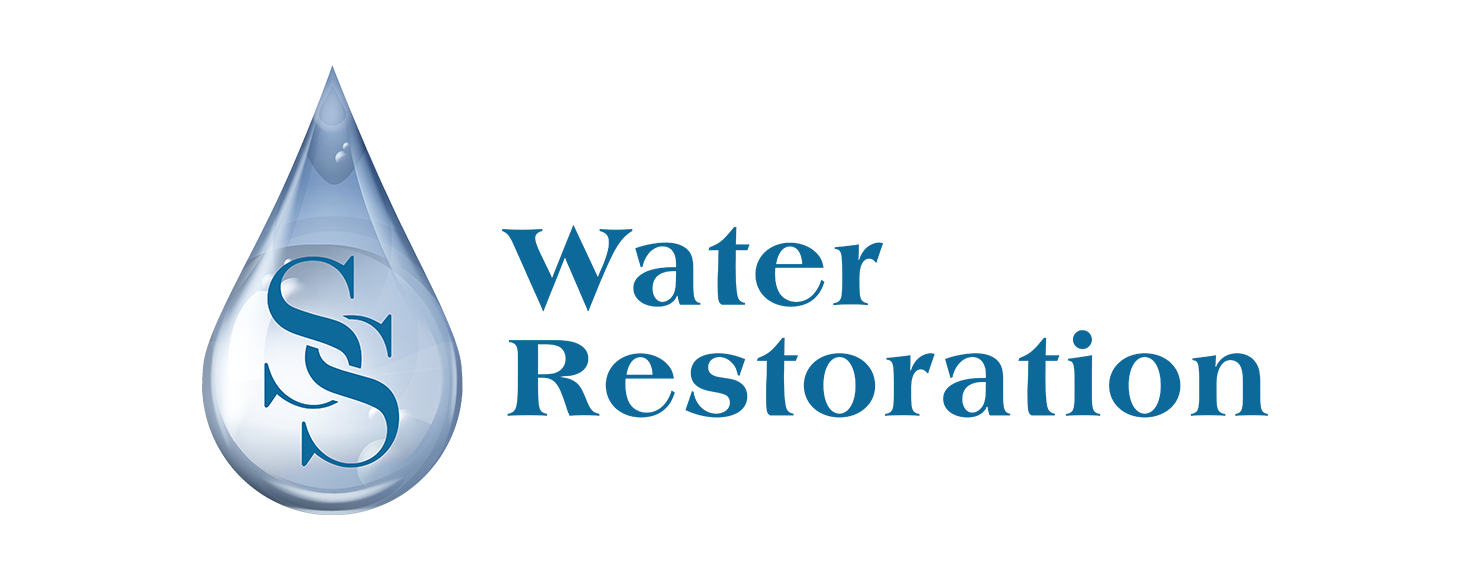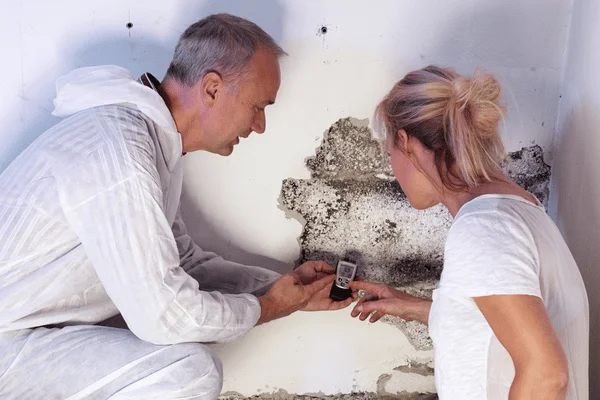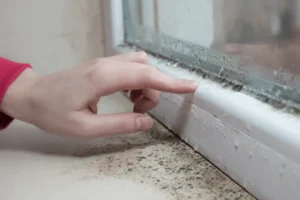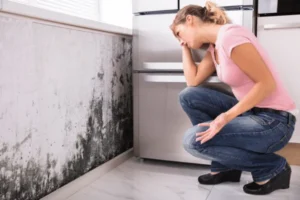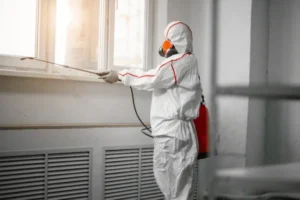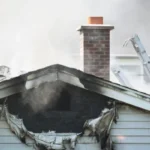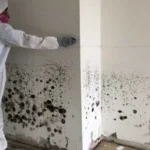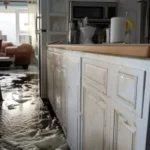Mold can quietly spread through your home, leading to health concerns and expensive mold damage. Early signs, such as musty smells or dark patches, should never be ignored. While minor issues might be manageable, others require expert intervention.
Understanding how to fix mold damage helps you take the proper steps at the right time. Acting quickly protects both your health and your property. Stay informed and proactive to keep your home mold-free.
Clearly, recognizing signs of mold damage is crucial for homeowners. Mold in the home spreads quickly, so knowing how to fix mold damage and taking care of mold issues promptly prevents costly repairs. Let’s take a closer look at the details now!
What Are Mold Signs and Why Should You Care?
If you notice signs of mold damage or smell mold in the home, act fast. Taking care of mold issues and learning how to fix mold damage protects your health and property.
Mold signs can show up in various ways, from visible patches on walls to musty odors lingering in the air. Ignoring these signs might lead to bigger problems down the road, so staying vigilant is key.
Common Visual Signs of Mold in the Home
Spotting mold early can prevent significant damage. Watch for these signs:
- Dark patches or discoloration on walls, ceilings, or floors.
- Musty, earthy odors signal hidden mold growth.
- Peeling paint or wallpaper due to trapped moisture.
- Water stains may indicate ongoing leaks.
- Warped or bubbled surfaces from moisture damage.
These clues often appear subtly but can escalate. Investigate promptly if you notice any, as mold spreads quickly under the right conditions.
Hidden Mold: What You Might Not See
Mold doesn’t always make itself obvious. Check these hidden spots:
- Behind drywall and paneling in humid areas.
- Under carpets and rugs after spills or leaks.
- Inside crawl spaces or basements, where air is stagnant.
- Around HVAC systems, vents, or pipes.
- Beneath sinks or appliances with slow leaks.
Smells and moisture may be the only hint. If your home has experienced even minor flooding or persistent humidity, hidden mold could be silently growing.
How to Identify Mold Signs Early
Mold doesn’t announce itself loudly—spotting subtle clues early helps protect your home’s health, structure, and peace of mind.
Musty Odors as an Early Indicator of Mold
Musty, earthy smells in basements, bathrooms, or kitchens may signal hidden mold. These odors often appear before visible signs. Trust your senses. Unusual scents can reveal moisture issues early. Don’t ignore them; quick action helps prevent mold from spreading. Use smell as your early warning system and protect your home’s health before damage grows.
Check for Water Leaks and Moisture Sources
Water leaks fuel mold growth. Inspect beneath sinks, behind appliances, and around windows or doors. Look for signs of dampness, condensation, or pooling water, especially after heavy rainfall. Even minor leaks can create significant problems if left unaddressed. Regular moisture checks help you catch issues early and protect your home from costly damage and unhealthy mold buildup.
Visual Signs: Staining, Warping, and Discoloration
Stains, warping, and discoloration are visual red flags. Dark spots on ceilings or yellow patches on walls may indicate the presence of mold. Warped wood or buckled drywall suggest moisture issues. These subtle changes are early signals. Monitor damp areas closely—catching problems quickly can prevent larger mold outbreaks and help keep your living space safe.
The Health Risks of Ignoring Mold Signs
Ignoring mold signs can lead to serious health issues, including respiratory problems and allergies. It’s vital to recognize the risks and take action before they escalate.
Respiratory Issues and Mold Exposure
Mold spores in the air can seriously impact respiratory health. Even for those without existing conditions. Watch for these symptoms:
- Persistent coughing unrelated to colds or allergies
- Wheezing or a tight chest during rest or activity
- Shortness of breath that worsens indoors
- Throat irritation, especially in humid rooms
- Nasal congestion or sinus pressure without a seasonal cause.
Exposure can lead to chronic breathing difficulties over time. If you notice any of these symptoms, inspect your home for mold signs.
Allergies and Long-Term Health Risks
Mold exposure doesn’t just cause discomfort. It can seriously affect long-term health. Here’s what to look out for:
- Frequent sneezing or itchy eyes indoors
- Skin rashes or irritation without visible cause
- Recurring sinus infections or sore throat
- Worsening allergy symptoms in specific rooms
- Fatigue or brain fog linked to indoor air
When to Call a Mold Remediation Professional
When you spot mold, acting quickly can save you from bigger problems down the line. It’s essential to know when to call in a mold remediation professional, as they’ll help assess the situation and guarantee proper removal.
The Importance of Early Mold Remediation
Ignoring signs of mold can lead to health problems and costly mold damage. Mold spreads quickly, affecting air quality and potentially damaging your home’s structure. Early mold remediation helps reduce these risks.
Mold exposure can trigger allergies, breathing difficulties, and other health concerns, particularly in individuals with pre-existing vulnerabilities. Acting fast prevents the problem from escalating. If you notice signs of mold, contact a professional immediately. Prompt action protects both your health and your home while avoiding expensive future repairs.
What to Expect During a Mold Inspection
A mold inspection helps identify hidden problems before they escalate. A certified inspector will examine areas of concern, look for visible mold, and assess moisture levels. Tools like infrared cameras or moisture meters may be used. They’ll ask about water leaks, odors, or humidity issues.
After the assessment, you’ll receive a detailed report outlining the findings and recommendations. If mold is found, they’ll explain the next steps for safe removal and future prevention. Early inspection prevents bigger issues later on.
Mold Removal: How and When to Fix the Problem
When you notice mold damage, deciding whether to tackle it yourself or call in professionals is essential. Let’s explore the options and key actions you should take to address the problem effectively.
DIY Mold Removal vs. Professional Services
DIY mold removal may be effective for small areas using vinegar or baking soda, but it’s risky if the mold spreads or hides within walls. Without proper gear, you could expose yourself to health hazards. Professional mold removal services offer thorough inspections, specialized tools, and safer cleanup, especially for toxic black mold.
They also know how to fix mold damage correctly, ensuring your home stays safe long-term. While DIY may be cheaper upfront, expert help prevents future recurrence and structural issues. Choose wisely—sometimes peace of mind is worth the extra investment.
Steps in Mold Remediation: What You Need to Know
A mold-free home starts with a methodical approach to cleanup. Follow these essential steps:
- Identify moisture sources, such as leaks or damp zones.
- Address the issue promptly to prevent further mold growth.
- Evaluate the extent of the mold; consider professional help.
- Wear protective gear for safety and to protect yourself.
- Remove affected materials and seal them securely.
- Clean remaining surfaces with water and detergent.
- Apply a mold inhibitor to discourage recurrence.
- Ensure proper ventilation to reduce humidity.
- Monitor regularly for new growth or spread.
How to Prevent Future Mold Growth
To prevent mold from returning, it is essential to focus on regular inspections and maintenance around your home. By taking these actions, you can create an environment that is less conducive to mold growth.
Regular Inspections and Maintenance
Regular inspections and maintenance are vital for preventing mold growth. Focus on moisture-prone areas, such as bathrooms, kitchens, and basements, and check them frequently for leaks, water stains, or damp spots. Seasonal evaluations of your roof, gutters, and plumbing help catch issues early.
Confirm that your ventilation systems are functioning correctly, and keep your home organized to identify any hidden problems. A proactive routine not only safeguards your home’s integrity but also offers peace of mind by reducing the risk of mold-related repairs and health concerns.
Controlling Humidity and Moisture Levels
Preventing mold starts with controlling humidity and moisture. Use dehumidifiers in damp areas and maintain indoor humidity between 30% and 50%. Promptly fix any leaks in pipes, roofing, or windows to prevent buildup. While cooking or showering, turn on exhaust fans or crack open windows to release humidity.
Proper insulation also helps reduce condensation. Together, these strategies create a dry and mold-resistant environment that protects your home’s structure and ensures a healthier space for you and your family.
Proper Ventilation to Prevent Mold Growth
Ensuring proper ventilation is crucial in preventing mold growth. Open windows regularly to let fresh air circulate, especially in areas prone to high humidity, such as kitchens and bathrooms. Install exhaust fans to eliminate excess moisture and prevent stagnant air from accumulating.
Attics and basements benefit from increased airflow through the use of vents or fans. Keep HVAC systems in good working order by replacing filters regularly. Avoid overcrowding rooms with furniture, which can trap moisture. Prioritizing airflow is a simple but powerful way to preserve your home’s health and comfort.
Final Thoughts on How to Fix Mold Damage
Staying vigilant for signs of mold is key to protecting your home and health. By regularly inspecting for dark spots, musty odors, and water stains, you can catch issues early.
If you notice these signs, don’t hesitate to address moisture sources and clean affected areas promptly. Mold can damage your home and your health. If you notice any signs of mold growth, don’t wait. Contact us for a detailed inspection and prompt remediation services.
Mold in the home can cause health risks. Identifying signs of mold damage early and knowing how to remediate mold damage are essential steps in effectively addressing mold issues. Call us today to get started and protect your home!
